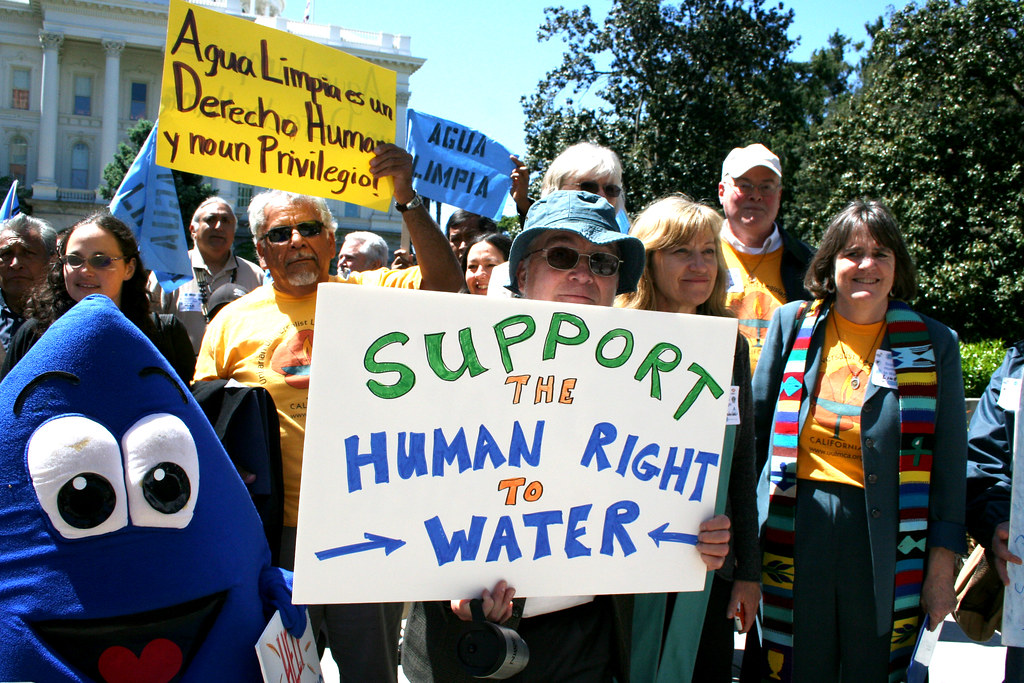
Grassroots missions start from the ground up and involve rallying people to take action on an issue and advocate for change. These movements are multifaceted and involve support from community members, local government, local business, and non-profit organizations. Below are resources for consideration as you organize to address environmental justice challenges in your community.
The first step of grassroots organizing is to have a well defined mission and ultimate goal you are trying to accomplish. You may want to see more green spaces, access to clean drinking water, or community gardens. Have a clear idea of what the issue is and how you want to see it change. Some examples of environmental justice topics to tackle in your community are:
Every community is different and has unique needs. Take a look at the areas for improvement and start there. Personal passion for the issue you are addressing is important and will help to motivate others to get involved. There is sometimes a significant time commitment needed to address the issues through meetings, advocacy, planning and actual work on the problem. Having a team with good energy around you is necessary to make it happen.
Once the mission is defined, the next step is rallying support behind it and getting the word out to potential collaborators and changemakers. Make a list of people/organizations who could be helpful in achieving your goal, such as:
Get in touch with as many people/organizations as possible. Express your mission and how they can assist in achieving the goals of the project. Grassroots movements rely on collaboration to accomplish goals, building a strong network of volunteers and supporters is critical.
The first task is to a build a team of people that can help address the task at hand. Start by making a list of individuals and local organizations that may be able to assist you in your project. Contact people on the list, attend public meetings, and gather a task force.
Once you’ve built a strong team, it is time to identify what tasks need to be accomplished for the project. This is different for ever project but it can be a clean up, sourcing trees to plant, securing supplies, or obtaining funding and permits. Create a list of tasks that need to get done.
After establishing your tasks, create a rough timeline of when you expect to accomplish each task. This will help keep you organized and on track to complete your project in a timely manner.
There may be a long list of things to accomplish so you need to determine which are the most time-sensitive, practical, and important to the mission so you know which to prioritize. Having high level or milestone objectives will help others to understand the overarching goal of the project and the major tasks that need to be accomplished.
Getting overwhelmed is easy. There are many details and tasks that will need to be accomplished. Remember to rely on your team, take things one step at a time, and don’t let small details keep you from achieving your goals. Doing things correctly is important, but if it doesn’t go exactly as planned, revise the strategy and keep moving forward. (There is more than one way to accomplish most things!)
Many communities have departments that can help not only accomplish a goal, but also maintain the accomplishment once the initial work is complete. Additionally, there may be a local organization or club that builds an affinity to the work being done and they may want to own the initiative once initial work is complete. Building a team and working and working closely with your local government can help ensure that the effort is not lost once completed.
A nonprofit might not be necessary for every initiative, but it can be helpful in some cases. THere are many non-profits that will support strategic initiatives that help them to execute your mission. Aligning with one of these may help you to raise funding, secure volunteers, and garner influence in achieving the goal. But there are some other considerations and potential benefits of establishing a nonprofit for your project.
To learn more about establishing a nonprofit explore these resources:
How to Apply for Nonprofit Status
Most grassroot missions require some degree of funding to accomplish their goals. Sourcing grants and taking donations can help you secure the necessary funds.
Funding can be sourced through governmental agencies, local businesses, and crowdfunding websites. Finding the right source of funding for your project means identifying how much financial support is needed as well as the project timeline and priorities. Contact local businesses and your municipality to see what funding they can offer. You can also explore funding on a state and federal level.
Environmental Protection Agency
New Jersey Department of Environmental Projection
National Environmental Education Foundations
When applying for grants or contacting organizations to inquire about project funding, have a clearly defined outline on why the funds are needed and how they will be used. Post regular updates of the project on social media to keep donors and community members aware of how their contribution is making a difference.
You may be subject to taxes on the income depending on how much funding you receive and where it comes from. Refer back to establishing a nonprofit or consider establishing a business in order to be prepared for tax season.
Community awareness, involvement, and support is important for a successful project. Get the word out to your community about what you are doing. You can post flyers, use social media, and attend community events. Remember the work you are doing effects your whole community so it is important to have as many perspectives as possible represented.
